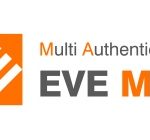
Optimizing Your Solution 1 – 1:N Authentication (Identification)
Differences Between 1:1 and 1:N Mofiria supports two types of authentication method, 1:1 authentication (verification) and 1:N authentication (identification).1:1 authentication (verification) is a method that specifies one finger vein data for the person to be authenticated and compares with their actual finger (vein) placed on the FVA device.On the other hand, 1:N authentication (identification) picks up one person from multiple pre-enrolled finger vein data just by placing a finger on the device. Both methods run a different process internally. While 1:1 returns one answer whether it is matched or not, 1:N executes a matching process with all candidates even if a good one is found in the middle of the








